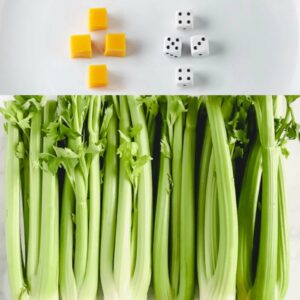As I mentioned a few weeks back, the 6 weeks between Thanksgiving and New Year’s Day tend to be the riskiest of the year for weight gain. And I am no exception: I am already 2 pounds heavier this morning than I was at Thanksgiving. Besides having already indulged in cupcakes and pizza for Graham’s 3rd birthday last weekend, I baked chewy Italian orange-zest and almond cookies last night in anticipation of our annual holiday cookie exchange party today (and although my plan is to indulge while at the party but refrain from bringing home any extra cookie spoils, contrary to the whole point of the party, I will also be bringing my homemade Baltimore eggnog – a punch bowl full, made with 2 dozen eggs, a gallon of whole milk and a quart of heavy cream, not to mention the loads of sugar and maple syrup — and will have a few glasses of that, too)… then I’ll be taking Graham to another preschooler’s birthday party tomorrow evening, attending a holiday luncheon for the Department of Medicine at work on Tuesday, and taking part in another cookie exchange with work colleagues this coming Friday. And it’s not even Christmas week yet!
It’s easy to see where all the extra calories can come from all season long, but Christmas Day itself can be particularly dangerous for those of us worried about weight gain: a survey study by the British kitchen retailer Wren Kitchens found that people who celebrate Christmas reported that their feasting for the day tallies up to, on average, 5,373 kcal. It’s a day that we often use as an excuse to go nuts and eat whatever we want, often starting with an extremely hearty breakfast, adding in highly caloric beverages throughout the day (just one cup of spiked eggnog runs about 600 kcal!), rich snacks like chips with dip, nuts, and cheese platters, and of course the heavy main meal with all the trimmings, a few glasses of wine, and topped off with a serving of dessert (or two). Not to mention the chocolate or other goodies that Santa might’ve left in your stocking.
I, for one, will not be restricting myself on Christmas. But, I will employ one small strategy to help keep my total calories marginally in check: I will eat something of “low calorie density” before each meal. Studies spearheaded by Dr. Barbara Rolls at Penn State have shown that eating a food that is high in water and fiber content and low in calories, such as a broth-based vegetable soup, 15 minutes before a meal will naturally cause you to eat fewer calories at the subsequent meal, leading to reduced caloric intake overall. After all, high-water/high-fiber foods have fewer calories per gram of food and fill you up much more than foods whose calories are packed into more dense packages. To illustrate the difference, imagine 8 cups (half a gallon) of chopped celery: it has the same calorie content as a single ounce of cheddar cheese, which is the size of just 4 dice. Which of these two options, if eaten 15 minutes before Christmas dinner, do you think would make you less likely to eat more turkey and stuffing?
Eating lots of fruits and veggies has been one of the cornerstones of my own successful weight loss and long-term maintenance, and Christmas Day will be no different: I plan to start each meal with veggies or a fresh apple, but will then let myself have the treats that I want and just stop eating when I’m satisfied. I will undoubtedly eat too much that day, but likely a lot less than I would have in my former life. Allowing for special indulgences is a part of my life in maintenance, and I, for one, will be enjoying my eggnog and figgy pudding.
Until next week-
xo Jen


